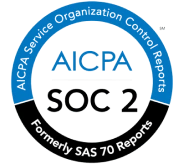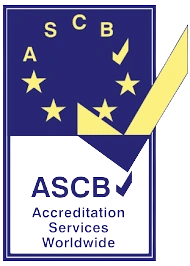Table of Content
- Introduction
- Understanding leave management
- The role of leave management (LM) in business
- Key elements of leave management
- Necessity of effective leave management
- Legal aspects of leave management
- Employee well-being and satisfaction
- Advantages of a robust leave management system
- Improving productivity through managed leaves
- Simplifying administrative tasks
- Enhancing employee satisfaction
- Challenges in implementing leave management
- Clearly commnicating the leave policies
- Coordinating for utilising the leave balances together
- Misuse of leave policies
- Best practices for leave management
- Keeping detailed reports
- Adhering to predefined leaves policies
- Make the best of the leave management system
- Transitioning to a digital leave management system
- How do you choose the right leave management system or software?
- What are the tips for smoothly transitioning to a digital leave management system?
- Creating an Inclusive Leave Policy
- What are the different types of leaves an HR leader must know about?
- How will a good and efficient leave policy boost employees to be punctual and show up at work?
- The Bottom Line
- More FAQs
Introduction
Managing employee leaves has never been an easy task. It can be challenging for modern and future-ready HR departments to keep track of leaves while ensuring compliance with legal requirements and keeping employees happy. However, a robust leave management system (LMS) can simplify the process, improve productivity, and enhance employee satisfaction.
In this blog, we will provide you with a comprehensive understanding of leave management - its importance, advantages, challenges in implementation, and best practices for effective management.
We will also discuss how transitioning to a digital system can benefit your organisation and how to create an inclusive leave policy that boosts employee morale. Join us as we explore ways to simplify your employee leaves tracking and monitoring system.
Also read: Benefits Of An Online Leave Management System
Want to skip the content?

Understanding leave management
Simplify policies to ensure compliance with labour laws, improving employee satisfaction by providing accurate leave balance information.
Automate leave requests, reducing paperwork and errors. Implement best practices in LMS to enhance company culture.
The role of leave management (LM) in business
Effective LM plays a crucial role in maintaining employee attendance and leave records, ensuring workload balance, and preventing buildups. It optimises employee engagement by providing leave benefits as per company policies, improving team coordination, and managing work hours efficiently. Implementing LM software enables real-time tracking of employee leaves, allowing businesses to manage their workforce in an accurate and efficient way. Unused time off can be a real problem for companies, but with the right policies and systems in place, leave management becomes an advantage rather than a hassle.
Key elements of leave management
A well-designed employee LMS is crucial for effective workforce management. It should track various types of leaves, such as sick leave and parental leave, ensuring legal compliance with state labour laws and policy guidelines.
Good leave request, approval, and cancellation policies, including bereavement leave, should be implemented to support employee well-being. Simplifying leave applications through a mobile app of uKnowva or an employee handbook can streamline the process. Accurately recording leave time and leave balance helps avoid payroll errors.
Necessity of effective leave management
An effective LMS is crucial for any organisation. It helps minimise the loss of productivity caused by employee leaves and ensures accurate leave balance and information about leave types, promoting employee satisfaction.
By managing leave requests efficiently, workload buildups can be minimised. Additionally, staying compliant with labour and company policies avoids legal complications. Offering the benefits of a good leaves tracking process and system improves the overall employee experience.
Legal aspects of leave management
Ensure compliance with labour laws, including paid leaves and public holidays, to avoid legal issues. Understand the legal requirements for different types of leaves, like medical leave, and implement policies that adhere to state labour laws. Accurately manage employee leave requests and track unused leave time for legal compliance. Implementing the right policies and utilising HR software like uKnowva can simplify employee leaves management and provide the advantages of a well-structured leave program. Keeping an accurate record of leave history is crucial for legal and administrative purposes.
Employee well-being and satisfaction
Prioritising employee well-being is essential for fostering a positive work environment. By implementing a robust leaves management policy, organisations can ensure the well-being and satisfaction of their employees. This can be achieved by accurately managing leave balance checks or types, offering leave benefits like pregnancy and emergency leave, supporting work-life balance through disability and parental leave, and efficiently handling leave requests. A good leaves management system addresses the challenges faced by employees and contributes to their overall satisfaction and well-being.
Advantages of a robust leave management system
Effectively managing leaves and work hours improves employee productivity. Administrative tasks, like the leave request process and attendance management, are simplified. Compliance with legal requirements at an enterprise level reduces the risk of legal complications.
Accurate leave balance and leave type information enhance employee satisfaction. Streamlining this process reduces workload buildups and errors.
Improving productivity through managed leaves
To optimise employee productivity, it is crucial to manage leaves and workload efficiently. By planning work schedules effectively considering employee leaves and available resources, you can minimise the impact of leaves on team productivity. Implementing leaves tracking and management software automates leave tracking and balance management, ensuring accurate leave time recording. This reduces the loss of work hours and enhances productivity. Managing leaves in an accurate and efficient way has a significant advantage in improving overall productivity.
Simplifying administrative tasks
Simplify administrative tasks by automating the leave request process, eliminating the need for paper forms and Excel sheets. A smart LM system reduces the administrative workload, streamlining leave time tracking, leave balance management, and leave approval processes.
This, in turn, improves the efficiency of HR professionals. Take advantage of mobile apps and software to simplify leave-related administrative tasks in a more accurate and efficient way.
Enhancing employee satisfaction
Streamlining the LMS through a completely integrated tool like uKnowva is crucial for improving employee satisfaction. Using it, organisations can effectively track leave balances and provide different types of leave options to cater to employee needs.
It is also essential to offer parental leave policies that comply with labour laws, promoting a supportive work-life balance. Creating a company culture that prioritises employee well-being further enhances overall satisfaction. By considering these factors, organisations can boost employee satisfaction and create a positive work environment.
Challenges in implementing leave management
Clear communication of leave policies is crucial for avoiding confusion among employees. It is also important to ensure adequate coverage during employee leaves to prevent workload buildups.
To prevent misuse of leave policies, guidelines should be established and enforced. Manual processes can lead to payroll errors, so it is essential to address this issue. Staying updated with state-wise, national, and international labour laws is necessary to avoid legal compliance issues.

Clearly commnicating the leave policies
To ensure a smooth process, it is crucial to have clear communication of leave policies. Employees should be well-informed about the types of leaves available to them and understand the process of applying for leave requests. Educating employees about leave time limits and explaining the policy for different types of leaves, such as medical and bereavement leave, is essential. Including leave policies in the employee handbook provides easy reference and ensures everyone is aware of the company's guidelines.
Coordinating for utilising the leave balances together
Developing a streamlined system to track employee leaves and plan for workload management is crucial. Encouraging team members to coordinate leave schedules can prevent work disruptions.
Cross-training employees ensure coverage during leave periods. Utilising an attendance management system helps monitor leave patterns and plan accordingly. Offering incentives for team members who willingly provide leave coverage can motivate them. By implementing these strategies, businesses can ensure adequate coverage during employee leaves.
Misuse of leave policies
To prevent the misuse of leave policies, implementing fully integrated and intelligent software is crucial for accurate tracking of leave applications. Monitoring employee leave history helps identify any patterns of leave abuse.
Established policies and consequences for unauthorised leave requests serve as a deterrent. Periodic leave balance audits can prevent discrepancies. Encouraging team members to report any violations of leave policies ensures a proactive approach to addressing issues.
Best practices for leave management
Maintaining detailed records of employee leaves, including leave types and dates, is essential for effective LMS. It ensures accurate tracking of leave balances and helps in establishing fair leave policies.
Utilising the leaves tracking module with other crucial systems like payroll, performance management, timesheets, and project management is important for continued business and workforce growth.
Complete suites like uKnowva can streamline the process by automating leave balance tracking and providing mobile app access for leave requests, approvals, and any sort of scenario to overview the leave cancellation requests, too. We also offer complete integration of all the core HR modules for a unified platform of work.
Keeping detailed reports
Maintaining accurate employee leave history is vital for legal compliance. By documenting leave types, dates, and durations, businesses ensure accurate payroll management. Storing leave records securely protects employee privacy. To simplify the record-keeping process, utilising a good leave management system automates this task.
Adhering to predefined leaves policies
To ensure adherence to defined leave policies, it is crucial to make sure that the guidelines are transparent and accessible to all employees. Training managers and supervisors on the proper implementation of these policies is also essential. Regularly reviewing leave policies to ensure compliance with labour laws is another important step. Additionally, communicating policy updates promptly to all team members and enforcing the guidelines consistently will help maintain employee trust. By following these practices, organisations can effectively manage employee leave and foster a positive work environment.
Make the best of the leave management system
By automating the leave request process, you can save time and reduce errors. With real-time leave balance information accessible through the software, employees can easily manage their paid leaves.
The software also enables you to generate real-time leaves reports, empowering better decision-making. Integration with payroll systems ensures seamless leave processing, approval, and cancellation experiences.
Transitioning to a digital leave management system
By evaluating the advantages of a digital system, such as accurate tracking of paid leaves and employee leave management, organisations can streamline their processes.
It's important to choose leave management software that aligns with the company's needs and budget. Planning the transition process, including employee training on the new system, is crucial. Communicating the benefits of the system helps gain employee acceptance. Monitoring the system's effectiveness and making necessary adjustments ensures its continued success.
How do you choose the right leave management system or software?
When choosing a leave management system or software, start by assessing your company's needs. Look for software like uKnowva that offers a range of leave types and policies. Consider ease of use, mobile accessibility, and integration capabilities. Look for accurate attendance management and leave balance tracking. Lastly, prioritise good customer support and regular updates.
What are the tips for smoothly transitioning to a digital leave management system?
For a safe and smooth transition to a digital LMS, it's important to communicate the benefits to employees and provide them with the necessary training and resources.
Gradually phasing out paper forms and Excel sheets can encourage adoption while offering support and assistance during the transition process is crucial.
Monitoring the system allows for the identification and resolution of any challenges or issues that may arise. By following these tips, businesses can navigate the change in an accurate and efficient way.
Creating an Inclusive Leave Policy
Regularly review and update policy to meet changing workforce needs. An inclusive leave policy addresses the biggest challenges in employee leaves tracking and management and ensures the right policies are in place. It offers the advantage of benefits like paid leaves and accurate tracking of unused time. By addressing these aspects, an inclusive leave policy becomes a valuable asset for organisations.
What are the different types of leaves an HR leader must know about?
To effectively manage employee leave, it's crucial to understand the different types of leaves available. Familiarise yourself with various types, such as sick leave and medical leave, ensuring you comprehend the eligibility criteria, duration, and documentation requirements for each. Stay mindful of public holidays and peak work hours when handling leave requests. Communicate the policies and guidelines for different leave types to your employees, and ensure your leaves tracking system or process accurately registers, logs, and manages them.
How will a good and efficient leave policy boost employees to be punctual and show up at work?
Supporting employee well-being and work-life balance, a good leave policy boosts employee morale. It shows care for their personal responsibilities and mental health, fostering trust, engagement, and satisfaction. By reducing workload buildups and preventing burnout, companies recognise the value of leaves and the benefits they bring.
The Bottom Line
In conclusion, implementing a robust LMS is crucial for businesses to ensure smooth operations, employee satisfaction, and legal compliance. A well-managed leave system not only improves productivity but also simplifies administrative tasks and enhances employee satisfaction. However, there are challenges in implementing the same, such as clear communication of policies, ensuring adequate coverage during employee leaves, and preventing misuse of leave policies.
To overcome these challenges, organisations should follow best practices such as keeping detailed records, adhering to defined leave policies, and utilising leave management software.
Transitioning to a digital LMS offers numerous benefits, including automation, improved efficiency, and accuracy. When creating a leave policy, it is important to understand different types of leaves and how a good policy can boost employee morale.
Overall, by simplifying the employee leaves tracking, processing, and recording system, organisations can create a more inclusive and supportive work environment.
More FAQs
-
What should be included in a leave policy?
A good leave policy should include details on different leave types, such as annual leave, sick leave, maternity/paternity leave, and unpaid leave. It should also outline the procedures for requesting leave, the required notice period, and any documentation or approval requirements.
-
How can a digital leave management system benefit organisations?
Transitioning to a digital LMS like ours offers numerous advantages. It automates the process of requesting and approving leave, reducing paperwork and administrative burden. It also improves efficiency by providing real-time visibility into employee availability and coverage. Additionally, our system can generate reports and analytics, allowing organisations to track and analyse leave patterns, identify trends, and make data-driven decisions.
-
How can a good leave management system boost employee morale?
A well-implemented leave management system demonstrates that an organisation values work-life balance and cares about the well-being of its employees. It allows employees to take time off when needed without fear of facing negative consequences. This leads to increased job satisfaction, lower stress levels, and improved overall morale. Furthermore, clear communication of leave policies and procedures fosters transparency and fairness, creating a positive work environment and building trust among employees.












